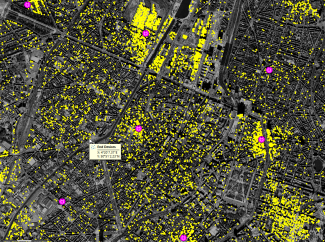The internet of things (IoT) is a network of physical devices, vehicles, sensors, actuators, and other objects with the ability to collect and exchange data.

What is IoT?
The IoT allows objects to be sensed and controlled remotely across existing network infrastructure, creating opportunities for more direct integration of the physical world into computer-based systems. Thanks to the huge addressing capabilities of IPv6, each thing is uniquely identifiable and is able to interoperate within the existing Internet infrastructure.
Devices may be connected to the internet over a regular wireline connection, Wi-Fi or cellular, or through Low Power Wide Area (LPWA) wireless technologies designed for the IoT. LPWA technologies allow to build wide area narrowband networks to connect objects through low-cost battery-based communications units. A number of LPWA technologies are available today to build and operate Low Power Wide Area Networks (LPWAN), such as LoRA,, Wireless MBus, and others. NB-IoT is a standard defined by 3GPP that provides mobile operators with a natural path towards IoT through an LTE-based low power wide area technology.
LPWA Network Planning for Non-Cellular IoT
One of the primary aspects of LPWAN planning is to find the best-suited site locations for gateways. The Atoll LPWA module and the Atoll LPWA ACP (Automatic Cell Planning) module allow operators to plan and optimise LPWA networks and to determine the best sites according to coverage, overlapping, and other LPWA-specific design and optimisation objectives.
NB-IoT Network Planning
The Atoll NB-IoT module fully models NB-IoT and allows operators to plan and optimise NB-IoT networks as independent deployments or as an integrated layer within an LTE network. The Atoll NB-IoT ACP (Automatic Cell Planning) module allows operators to select the best sites according to NB-IoT-specific design and optimisation objectives.
LTE-M Network Planning
The Atoll LTE module enables planning and optimising IoT networks based on the LTE eMTC standard using Category-M devices.

